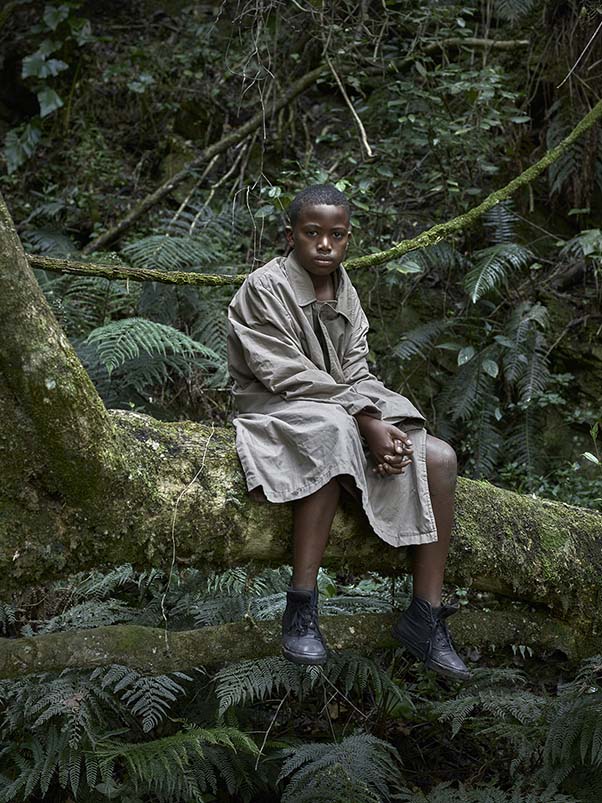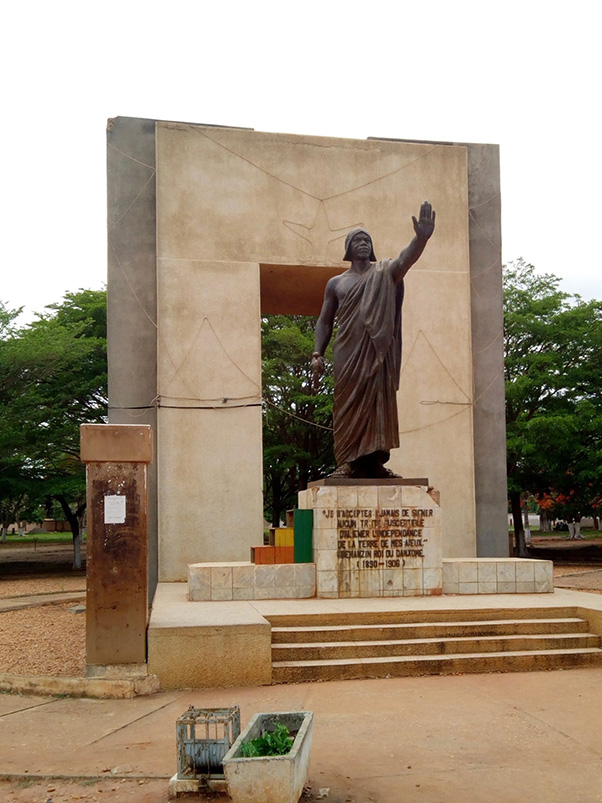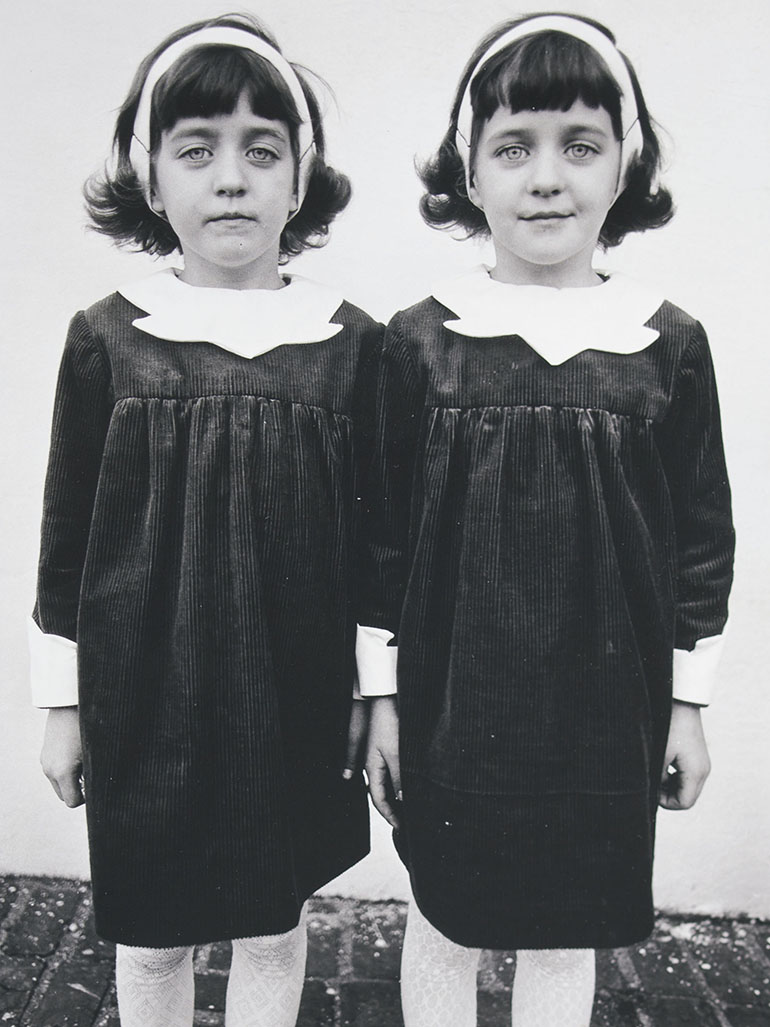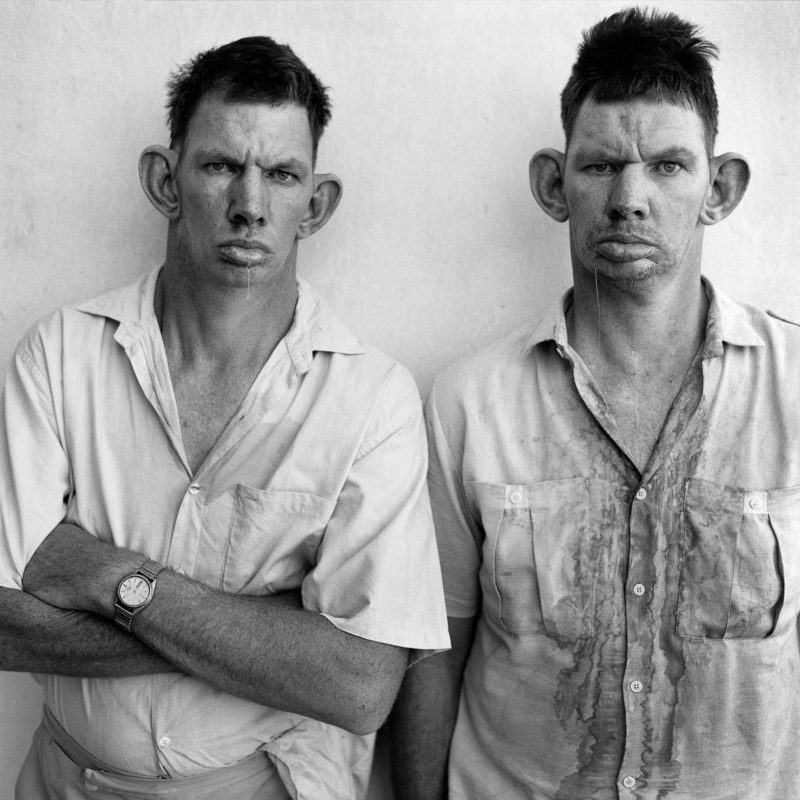
Who is Roger Ballen?
Roger Ballen 1 is often described as one of the most prolific photographic artists of the 21st century, with his works spanning over 40 years. His strange and extreme images are often created to confront the audience and challenge them to join the artist on a journey into their own psyche as Ballen discovers the deeper recesses of his own mind. Over the past decades, his style has evolved to take on a black and white format that has become synonymous with his works.
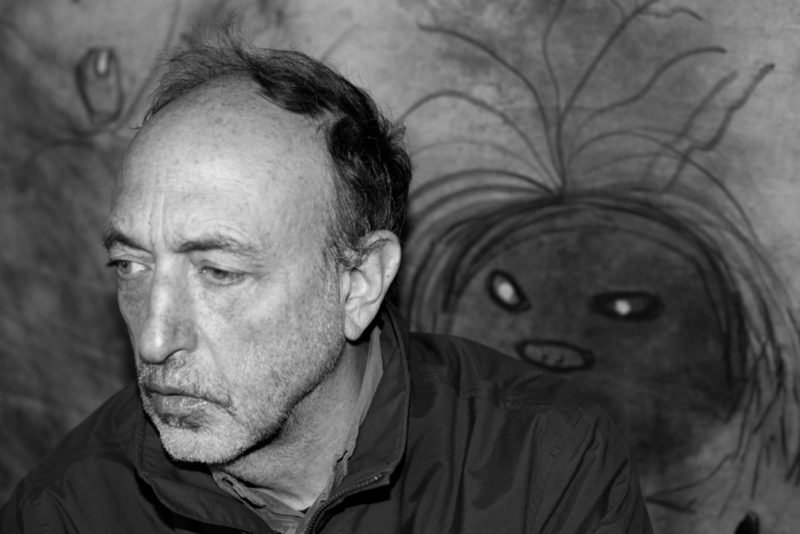
Influence and background
Ballen began taking photographs while working in his capacity as a geologist in South Africa 2. Because of his job, Ballen was able to visit nearly every small village and town across South Africa, which is how he was able to capture images of inhabitants and poor white settlers living on the fringes of society. At the beginning of his career, his photographs took on a more documentary nature, but as he progressed, Ballen’s work continued to become more staged.
Twins
Ballen’s early works can best be described as romantic and often featured poor white Afrikaners as the primary subjects. The Twins series was included as part of the Platteland collection. Roger Ballen’s book, which was inspired by political events happening in South Africa at the time, was so divisive, with its collection of photographs of citizens of South Africa who were alienated by the apartheid government and the society. It resulted in Roger Ballen being accused of depicting the Afrikaners as primitives.
During Apartheid 34 in South Africa, white Afrikaners not only enjoyed more wealth, but they could also own land and businesses despite the black majority inhabiting most of the country. Despite the political privilege and power that Afrikaners enjoyed during the Apartheid period, there were still plenty of white people, including the twins Dresie and Casie (photographed in 1993) that languished in poverty.
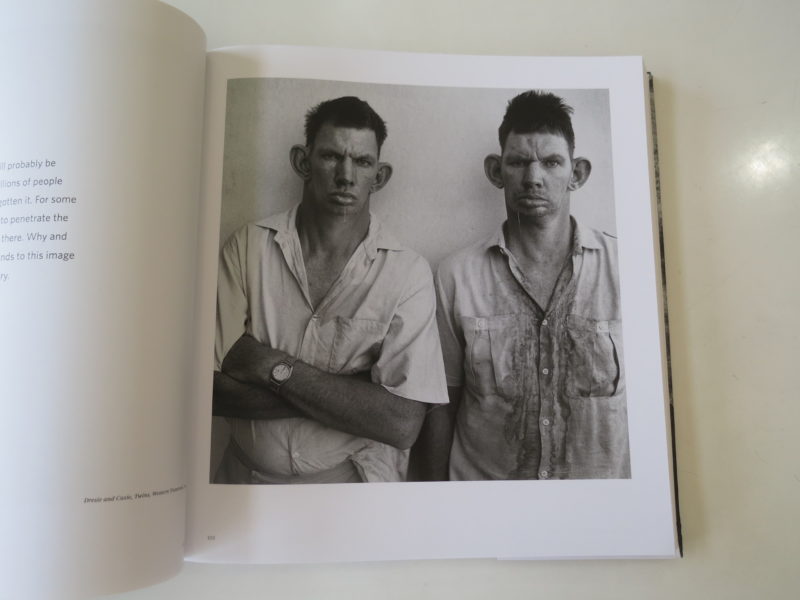
Photo: Rob Haggart/aphotoeditor.com
How Roger Ballen met the Twins
To this day, the artist has never revealed the real identity of the twins, where they stay currently (if they are even still alive). However, Roger Ballen only explained how he came to meet the twins.
I was staying on a game farm with my wife and children. I drove to the town to buy something and saw Casie working in a garden. I got out of the car and greeted him. I didn’t know how much he understood. He couldn’t talk too well, so I asked his mother for permission and got him to stand against a wall so I could photograph him. Suddenly, I became aware of a shadow. I turned and saw his brother. It was amazing, such a strong figure.
But the family reported a different account of the events. According to the family, the twins’ mother never met with Roger Ballen, nor did she give him permission to take his sons’ photograph. The family reported that the mother of the two boys was hurt and saddened by how her sons were portrayed in the book that was seen by an entire world.
It is hard to understand which side speaks the truth. The twins, however, are said to be happy all the time, perhaps not knowing that they became a center of attention in the entire world.
Roger Ballen’s camera
Throughout his work, Roger Ballen used a Rolleiflex square dome camera since 1982, and it is the same camera that he took the twin photograph with. And it was only until recently that he bought a digital camera.
Analysis
In the picture, Casie and Driesie appeared mean and suspicious, probably because they did not know what the photographer was doing to them. The photo shows the twins in dirty clothes with messy hair while their mouths were drooling, wetting their shirts. It is the image that surprised many when it was released to the public. The once unknown poor and mentally challenged twins became famous, not only in their small town and South Africa but the entire world.
Despite the white settlers enjoying all the power in South Africa, in the physical heart of the country, there were several instances of extreme poverty, which served as an inescapable testimony to the regime’s failure. Many of the subjects photographed by Ballen suffered from poverty and mental disease. As a result, these subjects were rejected and estranged by society, which spoke further to the failure of apartheid as a political ideology in South Africa.
Above all else, white settlers such as the Twins were severely alienated by the radical changes taking place in South African society at the time. Through his photography, Ballen was able to penetrate a world that had previously been masked by the mantle of Boer supremacy. The twins represented a group of individuals that the apartheid government wished to hide away as they represented the failures of a broken political system.
What happened to the twins?
The twins, only identified as Casie and Driesie, were put in a home for mentally challenged individuals in a small center in North West South Africa. Casie and Driesie were born in a place called Outjo, present-day Namibia, but moved to Wolmaransstad alongside their mother. They later returned to Namibia after their mother died and stayed with their brother and his wife. Then they were put in the nursing home because their relatives could not provide proper attention as the twins needed special care.
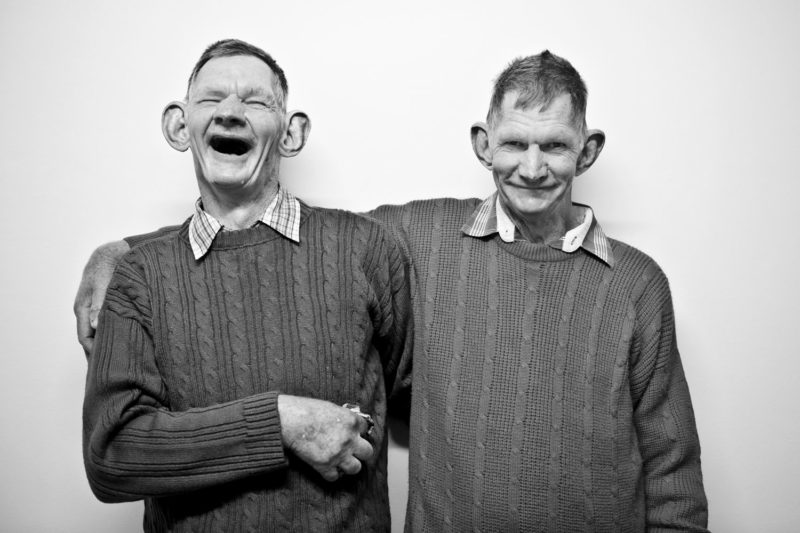
According to a psychiatric assessment record, Casie and Driesie, the twins, were mutes with the mental capacity of five-year-olds. The twins could not hold their saliva, and therefore drooled uncontrollably, and had to dry their chins with handkerchiefs they always carried in their hands. While they looked ‘unpleasant’, they somehow managed to win the hearts of the staff at the nursing home they took residence in. They were free-spirited and could hug everyone that they came across, including the nurses. Casie and Driesie were so jovial and could laugh all the time. Since they could not communicate with words, they used grunts to try and pass a message to someone.
Nevertheless, Casie and Driesie were skillful and could help around the nursing home. The manager of the home the twins stayed reported:
Driesie spends most days knitting and Casie mostly sweeps in front of the stoep. And on days when they just want to sit around, they just sit around.
It seemed the twins had a great bond between them. After all, they had lived their entire lives together.
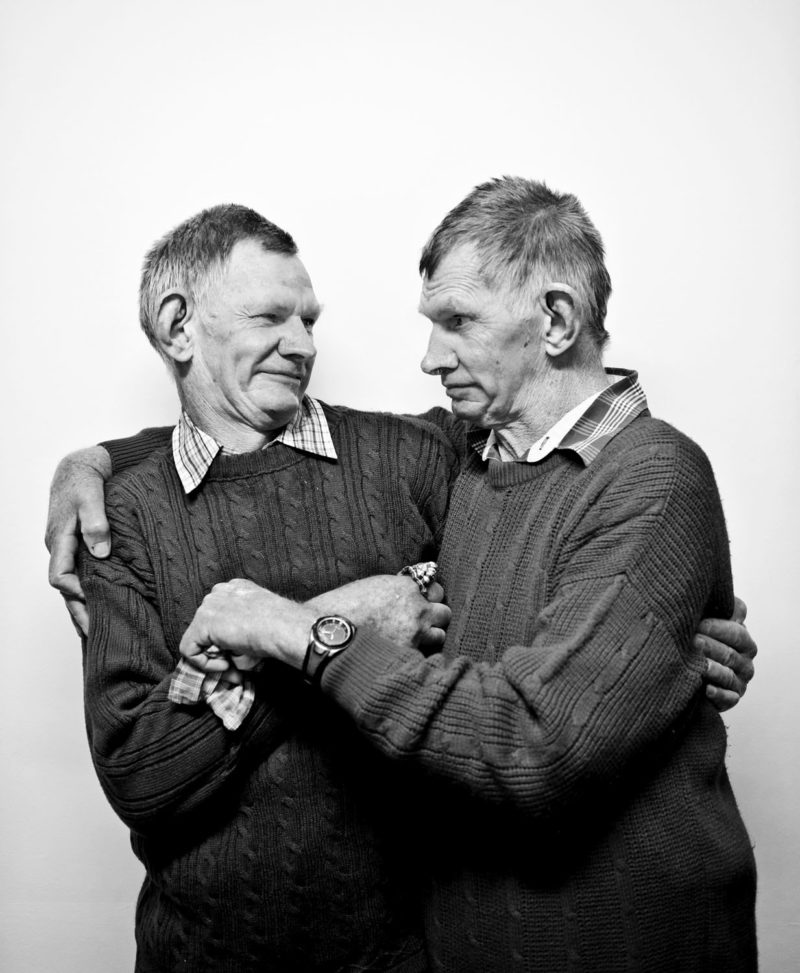
Videos
Roger Ballen about his ‘Ballenesque’ style
5 min 12 sec
The video reveals important elements that predominate his aesthetic and gives insights into Ballen’s photographic practice.
‘Asylum of the Birds’
This film follows Roger into a world synonymous with his photographs, as never before seen on film.
‘A Good Picture Comes From Nowhere’
In this film, Ballen takes the viewer on a journey deep inside the Earth’s core to explore the shadow side of the mind and the underbelly of life itself.
Explore nearby
Western Transvaal, South Africa
 Pieter Hugo’s 1994 – Kids in times of uncertaintyPhoto documentation (2014-2016)174 km away
Pieter Hugo’s 1994 – Kids in times of uncertaintyPhoto documentation (2014-2016)174 km away North Korea's oversea sculptures175 km away
North Korea's oversea sculptures175 km away
